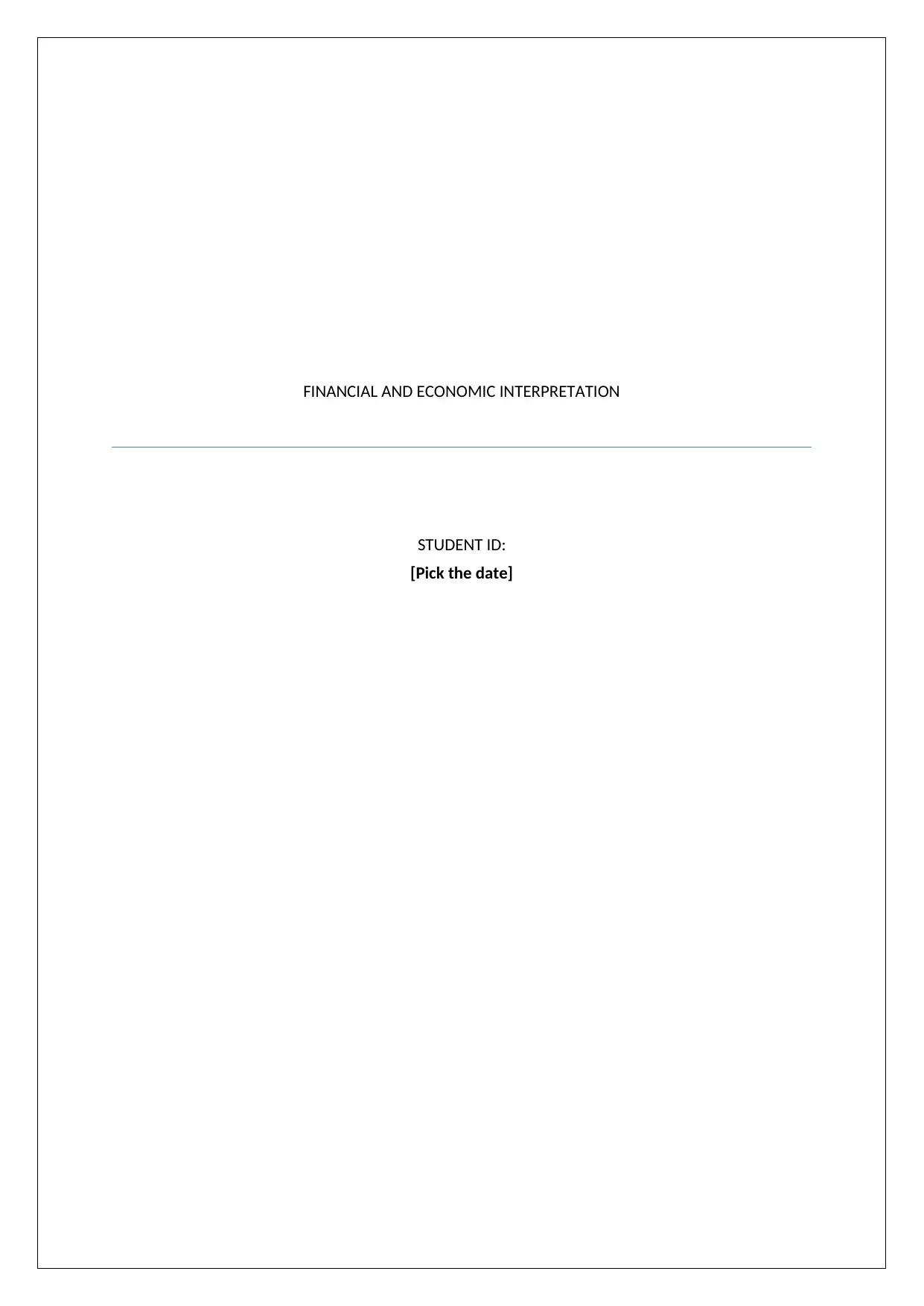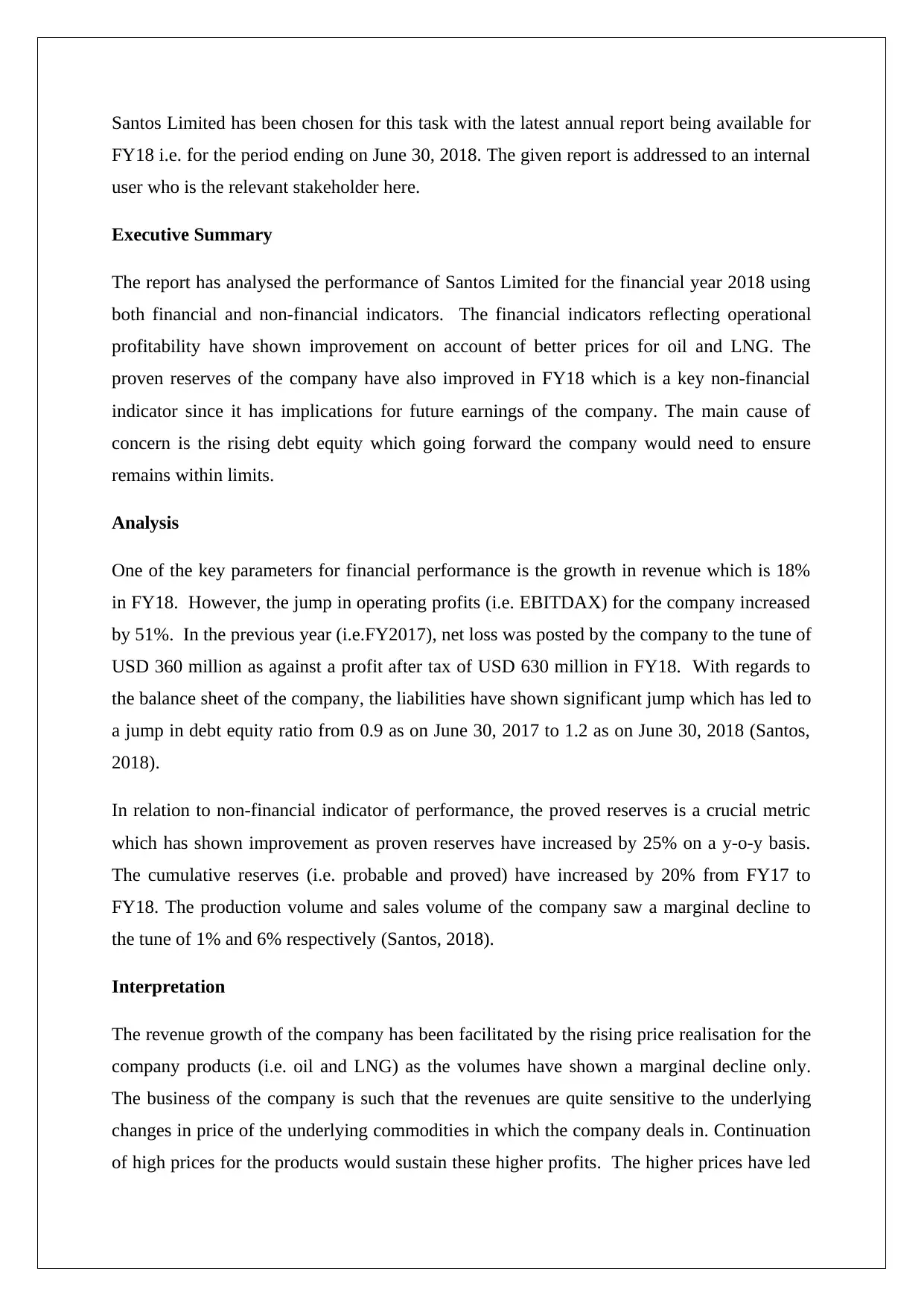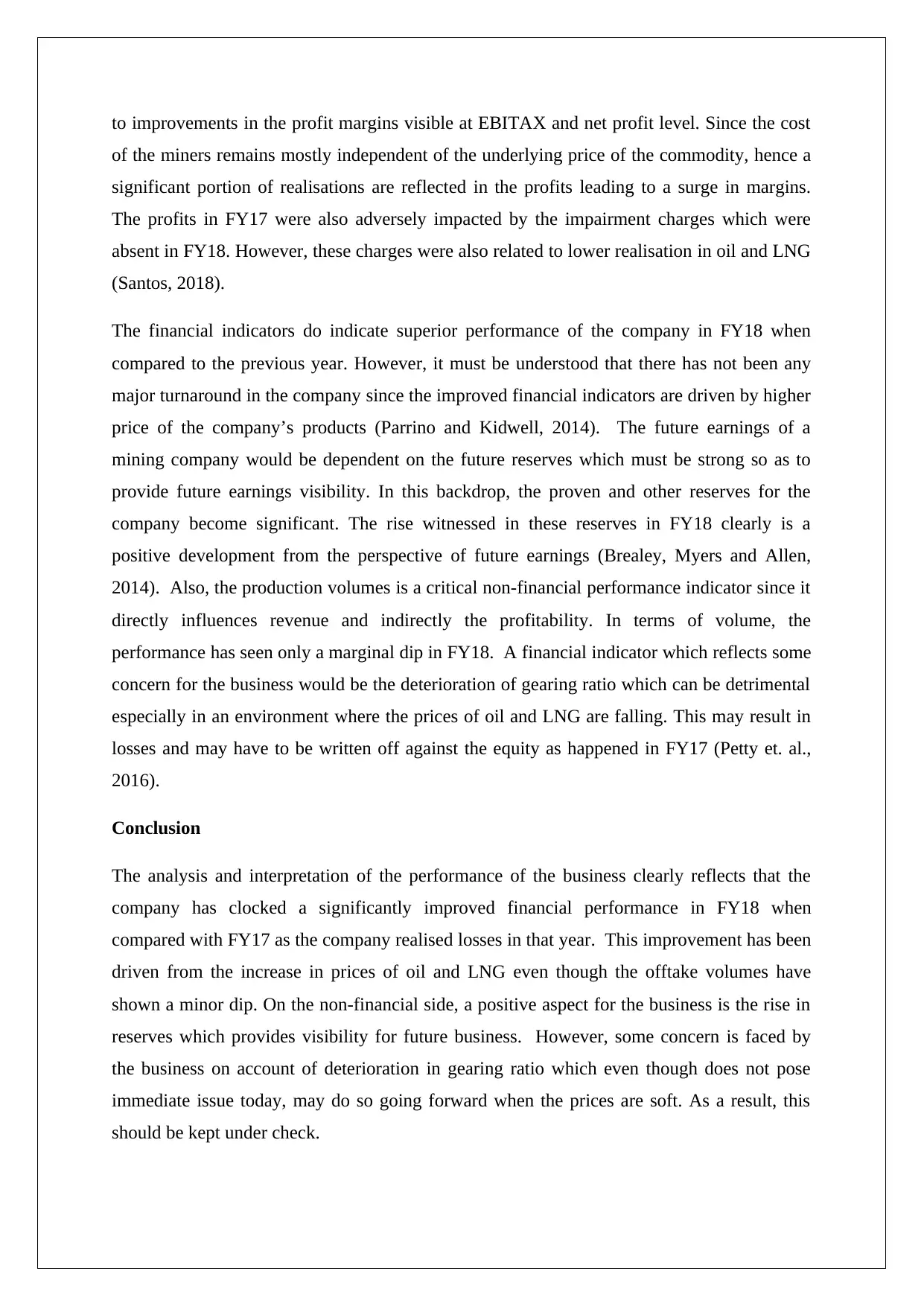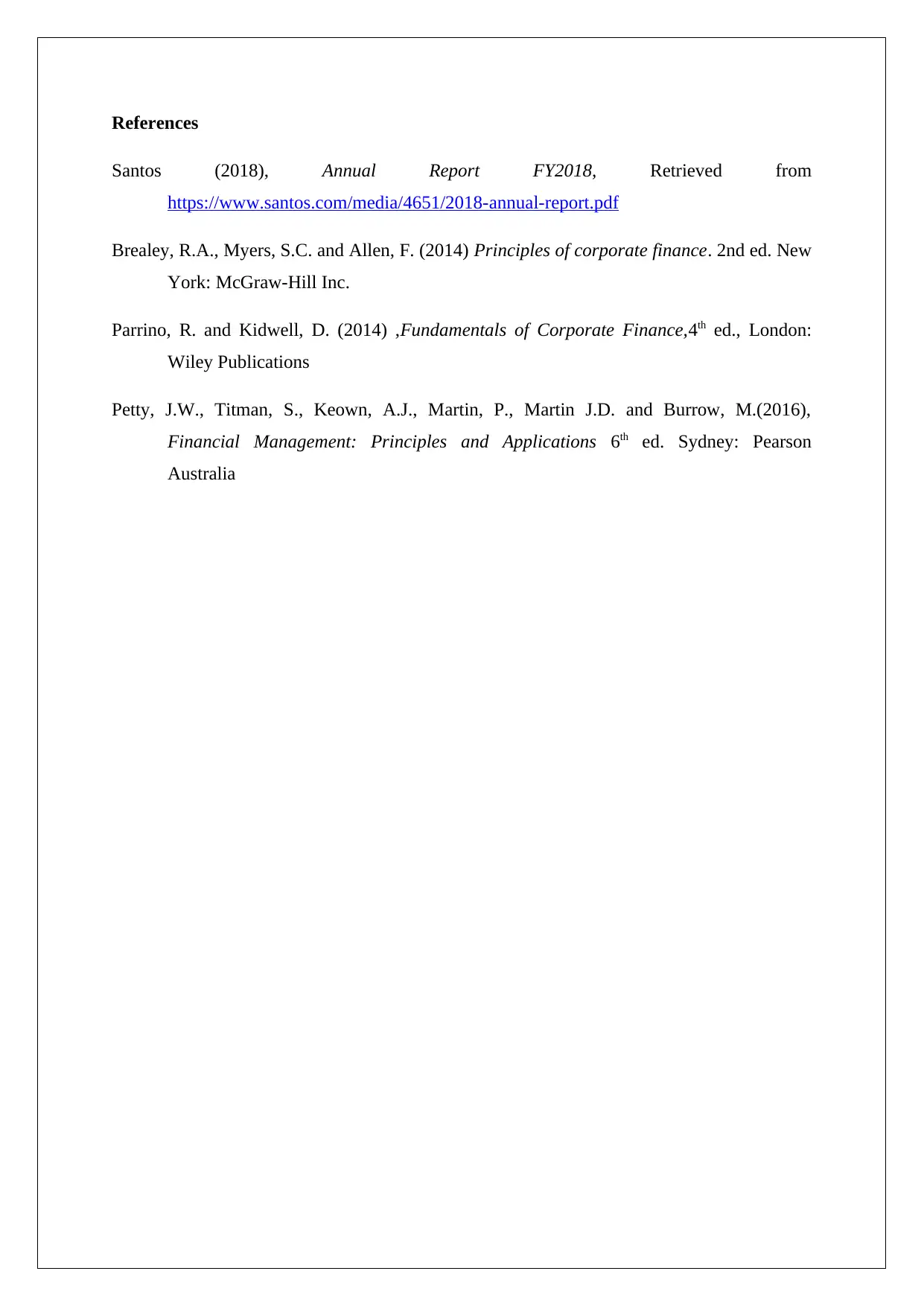MBA403 Financial Analysis Report: Santos Limited Performance
VerifiedAdded on 2022/09/27
|4
|993
|24
Report
AI Summary
This report presents a financial analysis of Santos Limited's performance for the financial year 2018, focusing on key financial and non-financial indicators. The analysis reveals an 18% revenue growth and a significant 51% increase in operating profits (EBITDAX), alongside a positive shift from a net loss in FY2017 to a profit after tax in FY18. The report highlights the impact of rising oil and LNG prices on revenue and profit margins. The analysis also addresses the increase in the debt-equity ratio and the positive development of improved proven reserves, which are crucial for future earnings. The report concludes by emphasizing the improved financial performance driven by higher commodity prices, while also acknowledging concerns regarding the rising gearing ratio, which needs careful monitoring. The report references the company's annual report and relevant financial literature to support its findings.
1 out of 4







![[object Object]](/_next/static/media/star-bottom.7253800d.svg)